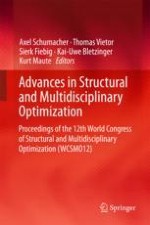2018 | OriginalPaper | Chapter
Coupling of Computer-Aided Methods: Supporting Product Developer During Embodiment Synthesis
Authors : Albert Albers, Markus Spadinger, Manuel Serf, Stefan Reichert, Steffen Heldmaier, Micha Schulz, Nikola Bursac
Published in: Advances in Structural and Multidisciplinary Optimization
Publisher: Springer International Publishing
Activate our intelligent search to find suitable subject content or patents.
Select sections of text to find matching patents with Artificial Intelligence. powered by
Select sections of text to find additional relevant content using AI-assisted search. powered by
